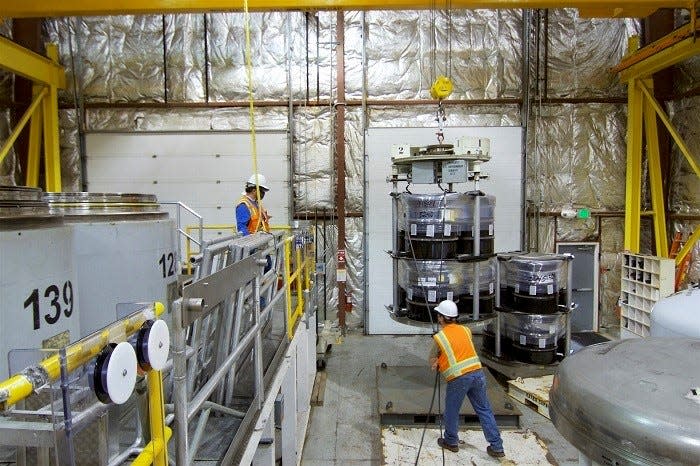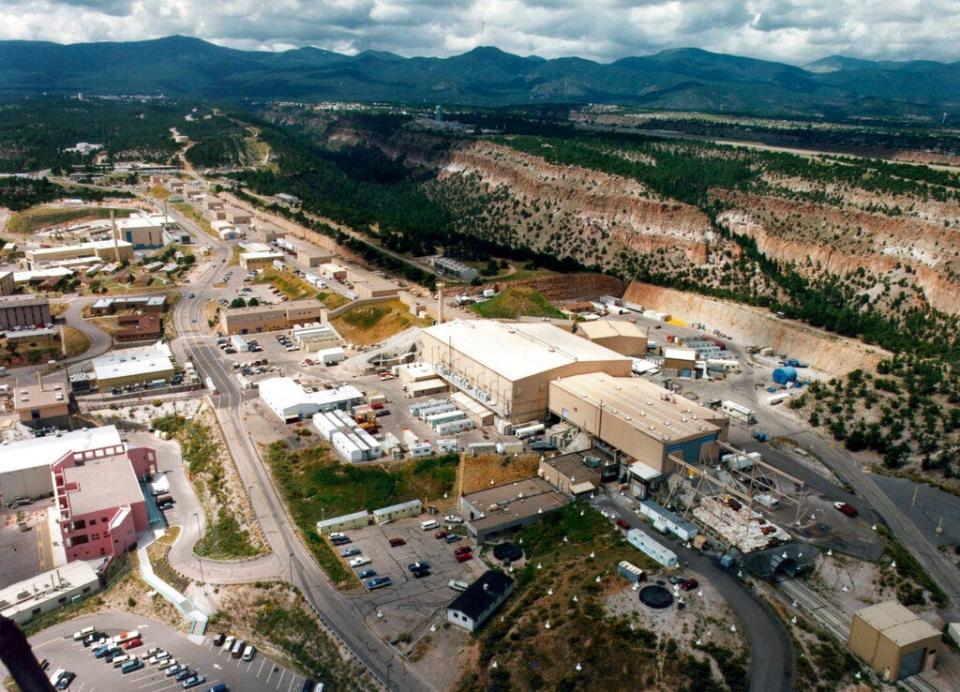Here's how much of Idaho's nuclear waste was disposed of in southeast New Mexico
More than half of the nuclear waste disposed of near Carlsbad came from a federal lab in Idaho, which surpassed 7,000 shipments last month since the repository opened in 1999.
Transuranic (TRU) nuclear waste, made up of clothing materials, equipment and debris irradiated during nuclear activities, is shipped to the Waste Isolation Pilot Plant about 30 miles east of Carlsbad, where it is buried permanently in a 2,000-foot-deep salt deposit.
It comes from Department of Energy facilities throughout the U.S., with Idaho National Laboratory as the lead shipper, records show, with a total of 7,052 shipments as of Sept. 23, according to the latest DOE data.
That’s about 52 percent of the 13,665 shipments the site took in since it opened.
More: New nuclear waste rules stricter for Carlsbad area facility. Will New Mexico enforce?

Idaho Waste was prioritized by the DOE via a 1995 settlement agreement between that state and the federal government.
It arose from a lawsuit the State of Idaho filed against the DOE seeking to remove nuclear waste from the state and prevent its storage at the lab.
More: Trinity Site downwinders call on US House to pass nuclear reparations for New Mexico
About 65,000 cubic meters of waste was supposed to be removed from Idaho by the end of 2018.
Dan Coyne, senior director at Idaho Environmental Coalition, a contractor leading cleanup at the facility said the DOE will continue working to fulfill this commitment to Idaho using the WIPP facility.
“This milestone could not have happened without the dedication and perseverance of countless hard-working individuals, at both the Idaho Cleanup Project and the Waste Isolation Pilot Plant over the past two decades,” he said.
“This has been a team effort since the beginning and will continue so through the very last shipment.”
More: Feds ramp up project sending nuke weapons waste from South Carolina to site near Carlsbad
Where does the rest of the nuclear waste come from?
Idaho was followed by 2,045 shipments from the now-decommissioned Rocky Flats Environmental Technology Site, which developed nuclear weapons near Denver until closing in 1989 and completing clean up in 2006.
The Savannah River Site in South Carolina had the next-most shipments with 1,723, records show, followed by Los Alamos National Laboratory in northern New Mexico with 1,620 shipments.

More: New Mexico lawmakers discuss nuclear impacts during meeting at Los Alamos National Lab
The Hanford Site in Washington had 572 shipments, followed by Argonne National Laboratory in Illinois with 202 shipments.
Another 48 shipments came from the Nevada Test Site, along with 43 from Lawrence Livermore National Laboratory in California and 34 shipments from the Waste Control Specialists facility in Andrews, Texas.
This year, a total of 350 shipments were received at WIPP, records show.
New Mexico nuclear waste prioritized by State
Together, Los Alamos and Sandia National Laboratories in Albuquerque represented 1,630 shipments of nuclear waste, meaning only about 12 percent of the total shipment sent to WIPP came from within its host state.
More: Here's what you need to know to give feedback on nuclear waste disposal near Carlsbad
That was a point of contention for the State of New Mexico and activist groups, who argued that since New Mexico takes on the most risk of having the repository within its borders, it should see the most benefit of addressing the state’s nuclear waste.
This led the New Mexico Environment Department to call on the DOE to prioritize New Mexico waste, chiefly from Los Alamos, via a renewal of the DOE’s 10-year permit with the State expected to go into effect next month.
A clause in the new permit, released in August after the State and DOE signed a settlement agreement, required the DOE to certify there was sufficient space in the permitted underground waste disposal panels for waste currently stored at Los Alamos.
More: $11.7M sent to SENMC from Energy Department to train nuclear waste workers in Carlsbad
It’s mostly left over from the Cold War, known as “legacy waste,” and a separate portion of the renewed permit also required the DOE to set aside Panel 12, one of two new panels established in the new permit, for legacy waste.
In a statement, NMED Cabinet Secretary James Kenney said New Mexico should lead the DOE’s cleanup process and benefit the most from removing nuclear waste from the DOE’s facilities.
“Communities in New Mexico and around the U.S. benefit from the clean-up of legacy waste and its disposal at WIPP,” Kenney said. “The new permit conditions affirm New Mexico’s authority and position that all roads lead from WIPP – we are no longer the last stop for clean-up but the driving force in that process that begins here.”
Adrian Hedden can be reached at 575-628-5516, achedden@currentargus.com or @AdrianHedden on X, formerly known as Twitter.
This article originally appeared on Carlsbad Current-Argus: Here's how much of Idaho's nuclear waste was disposed of in New Mexico

